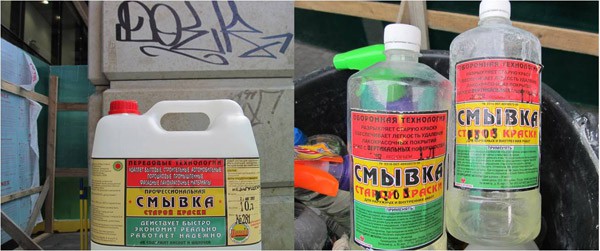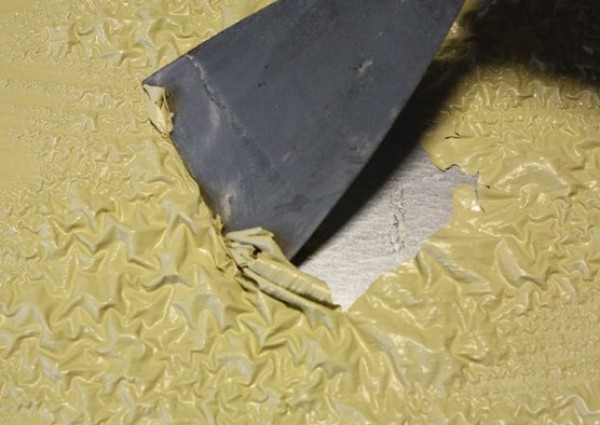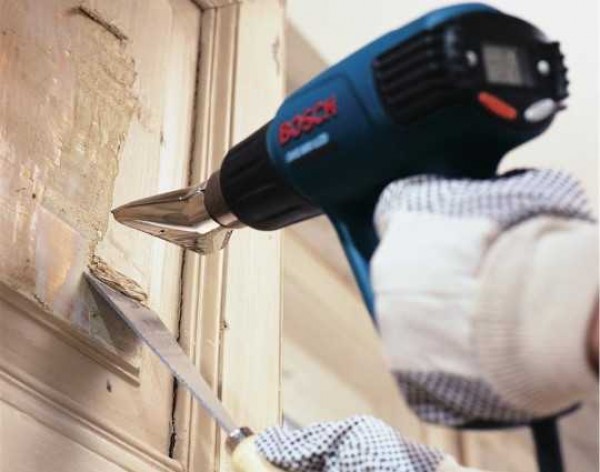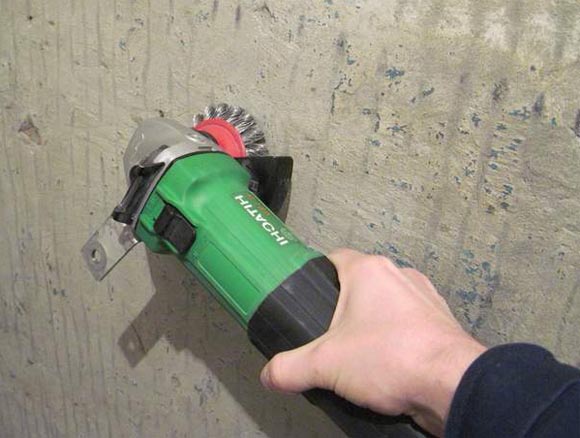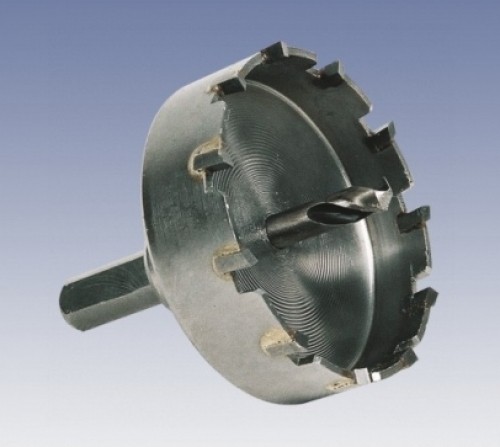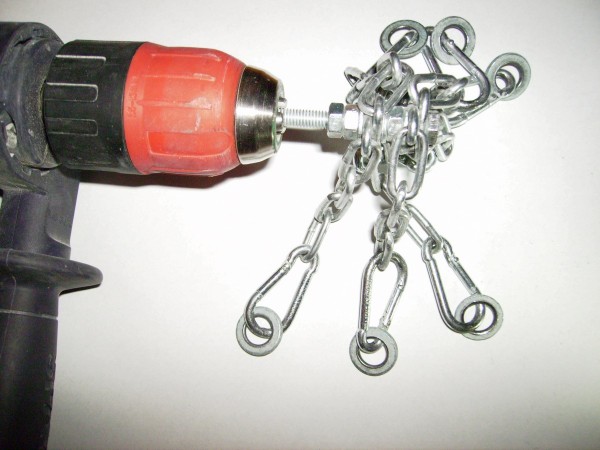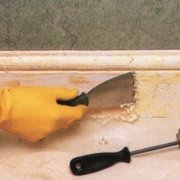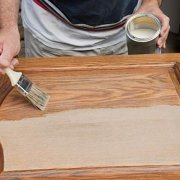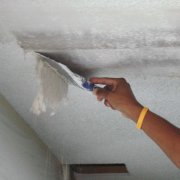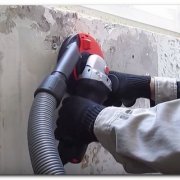How to remove oil paint from a wall quickly
Anyone who has tried at least once to clean the walls of an old paintwork knows how difficult it is to remove oil paint. Even if in places it swollen and falls off by itself, it keeps so tight in some areas that it does not lend itself to the action of a scraper or an iron brush.
However, there are several ways to remove old oil paint from the walls, and their choice depends on the further intended finish, your willingness to spend time or money.
The content of the article
Why remove old paint
And is it always necessary to do this? The question is very simple, as is the answer to it.
To begin with - where now can you find such a coating on the walls? Unless in old apartments, in which the “Soviet” decoration is still preserved: walls painted with dark color below and light (or whitewash) on top. But this is not so important.
Important - what are you going to do next with them:
- If aligned with plaster (see Alignment of walls with plaster according to all the rules), putty, veneered with ceramic tiles, paint or wallpaper, then you need to peel off the coating without fail, because building mixtures and adhesives will not “stick” to it or the adhesion will turn out to be very unreliable. The result may be peeling of the new coating.
- If expected drywall finish, clapboard, wall panels or any other materials attached to the crate, there is no need to remove the paint.
Therefore, it is advisable to make a decision about further finishing in advance before removing the oil paint from the walls, spending a lot of time and effort. And even if it is necessary, the method of dismantling the old coating is also often selected depending on the type of coating of the new.
What tools come in handy
A tool for removing paint from walls is used very different. That is, everyone can find what will ideally fit their budget and the situation as a whole.
Depending on the type of paint and the method of its removal, you may need such materials and tools:
- Building hair dryer - they are useful for the thermal method;
- Electric drill;
- A spatula or scraper is a universal remedy;
- Water;
- Personal protective equipment, such as gloves, respirator.
- The liquid with which the varnish is removed, well, brushes or a roller to it. With such a tool, you need to be extremely careful as it can be toxic and cause allergies.
Methods for removing oil paint
Each method described below has both advantages and disadvantages, including one common one: in any case, you will need a lot of time and effort.
Mechanical
Physically, this method is the most time-consuming and long, but it does not require financial costs and does not harm health. The main tool is an ordinary ax, which you have to do with your own hands. This requires considerable physical strength.
This method is ideal if:
- After cleaning, you will level the walls with plaster;
- Or tiling it.
Both plaster and adhesive solutions are best adhered to a rough surface, and it becomes exactly this after processing with an ax. The essence of cleaning the wall from the oil coating is that it literally cuts off the surface.
It is done like this:
- First, with a sharp ax, frequent incisions are made over the entire area to be cleaned.;
- Then the wall is abundantly wetted with water using a spray bottle or wet rag;
- When water is absorbed, the coating should be removed with the same ax or hammer and chisel.holding the tool not at a straight line, but at an acute angle to the surface.
Tip. It is better to moisten and clean small areas so that the water does not have time to dry.
This method is also chosen if the work is performed in a room without ventilation, which cannot be actively ventilated. A lot of dust is formed, but a regular gauze bandage will help protect the respiratory system from it.
Chemical
To wash paint off the walls is physically much easier than cutting it down (see How to wash off the paint without problems) And faster. And this is quite feasible, since there is a special tool for removing oil paint from the walls, and not one. Often it is called so - washing.
In its composition it contains acids, solvents and other chemicals that soften the coating, which is then easily removed with a spatula or metal scraper.
As you already understood, the washing process is not at all like removing dirt from the surface with water and a rag, since the solution is very aggressive, and you need to work with it, strictly observing the technology:
- On the surface, the solution is applied with a roller or brush in one direction;
- After the specified time, when the coating becomes soft, it is removed together with the applied tool with any convenient tool;
- The procedure sometimes has to be repeated in order to achieve the desired result. As a rule, repeated washing is necessary if the paint is applied in several layers;
- At the end of the work, the paint-solvent mixture must be disposed of, preventing it from entering the ground or domestic sewage system.
The biggest drawback of this method is the danger of poisoning with volatile substances or getting a serious burn of the skin and mucous membranes. Therefore, it can be used only in rooms with a powerful exhaust hood or with the possibility of good ventilation. But even in this case, the smell can last quite a long time, so you can’t live or just stay in the room for a long time during the repair. Especially for children and people with health problems.
Tip. To protect yourself, work should be done in a respirator, protecting the eyes with special glasses and hands with gloves. It is also advisable to be dressed in a suit with long sleeves and legs.
The second serious minus is the high price of the product, which significantly affects the wallet if a large area is to be processed. In addition to ready-made chemicals, you can use less hazardous substances: lime, soda ash, water glass.
Their use for walls is difficult, but it will be possible to remove oil paint from the floor without problems:
- It should be abundantly moistened with water, covered with a continuous layer of soda and covered with sackcloth for a day, constantly wetting it during this time. The next day, the swollen paint will be easily removed with a spatula.
- Quicklime will help speed up the process, which is mixed with soda ash in a 3: 1 ratio. thick slurry is also applied to the surface and incubated for 12 hours.
- But the walls can be greased with liquid glass and allowed to dry. When this happens, the resulting silicate film will be removed from the surface along with the old paint.
Thermal
Oil paint softens not only under the influence of chemicals, but also under the influence of high temperature. If the coating is well heated, it can be scraped off with a spatula. This can be done with a building hair dryer.
The work in this case is carried out simultaneously: a small area heats up and is immediately freed from the paint, until it is frozen again.
In the absence of a special tool, you can use a conventional iron, heating the painted surface through the foil.
It is important. The method cannot be applied on areas with electrical wiring, as well as on surfaces that are afraid of heating (plastic, PVC).
The heating method could be considered the cleanest and safest if the paint did not emit toxic substances when heated. Therefore, as in the case of washing, the instruction allows its use only in ventilated rooms and subject to the use of respiratory protection.
But it’s impossible to use a blowtorch, gas burner or any other open flame source to soften the paint - this is a fire hazard. Especially if the base under the coating is wooden.
Mechanized
Mechanized methods speed up the process, but create a lot of dust and dirt. Therefore, it is worth recalling the need to use a respirator or gauze bandage on the face.
As the main tools, a grinder or drill with special nozzles is used:
- Nozzles for the grinder - a wide abrasive wheel or a round metal brush. To reduce the amount of dust, it is recommended to take an assistant with a vacuum cleaner, if it is not possible to use a specialized tool with a built-in vacuum cleaner.
- On a drill or punch, you can fix the crown on a brick.
- Another paint remover is the paint chain, also attached to the drill. If you could not find it, you can use any chain with thick links (at least 5 mm in cross section). There should be an odd number of links: 11, 13 or 15, so that after the central link has been fixed, the chain length on both sides is the same - for balance. For the same reason, if the links are damaged on one side, they are removed and on the other, until there are three left on each side. In this case, the chain changes to a new one, since working with a short one will be uncomfortable and traumatic.
Note. If you are right-handed, a chain drill should be turned on by turning left, and if left-handed, turn right.
Conclusion
Thermal and chemical cleaning methods are less time-consuming, in addition, they can do without serious damage to the surface of the base and subsequently save on leveling solutions. But they are also the most dangerous to health. Therefore, think carefully before choosing any of the proposed methods.
Perhaps the video in this article will help you with this.


